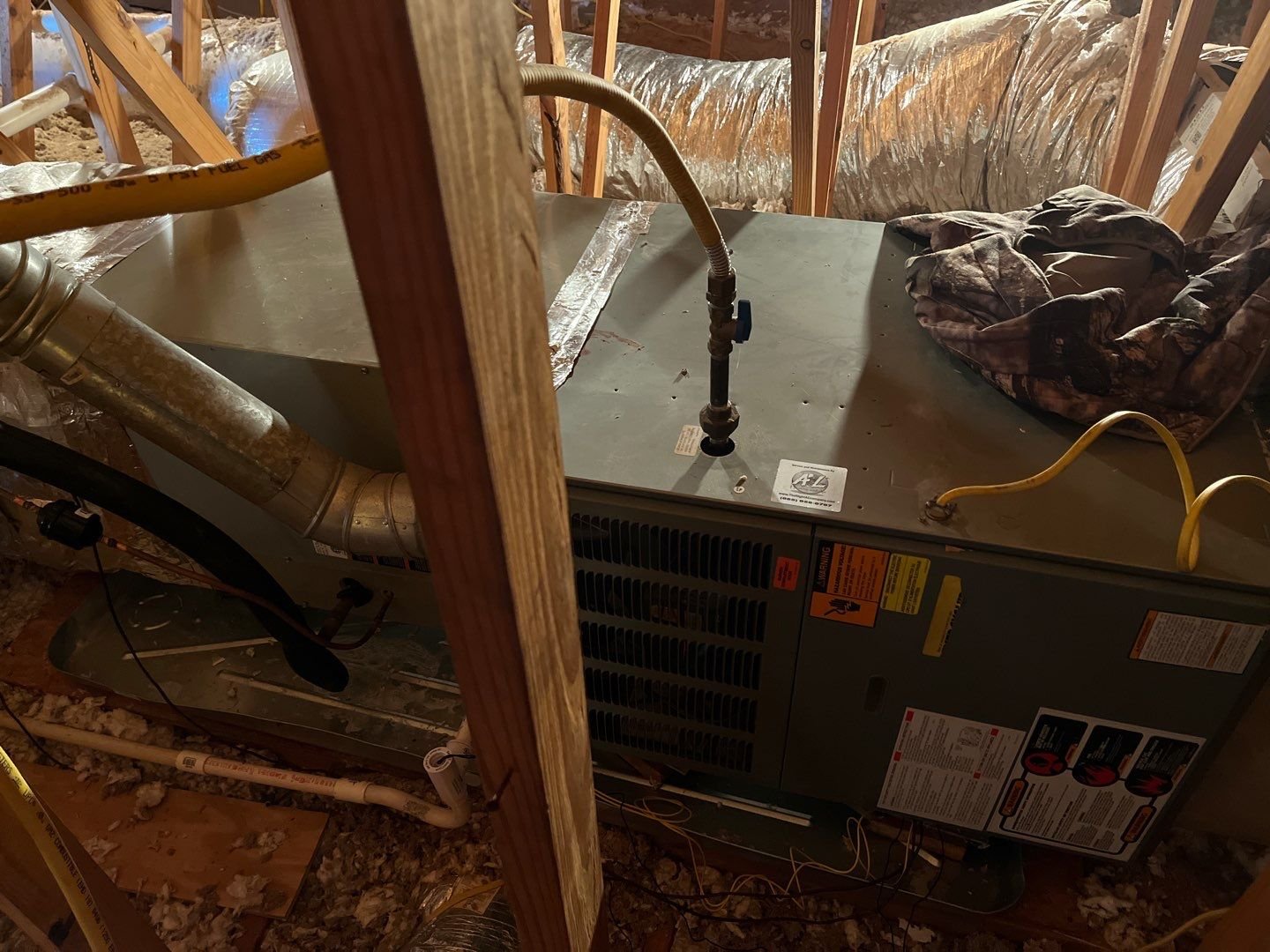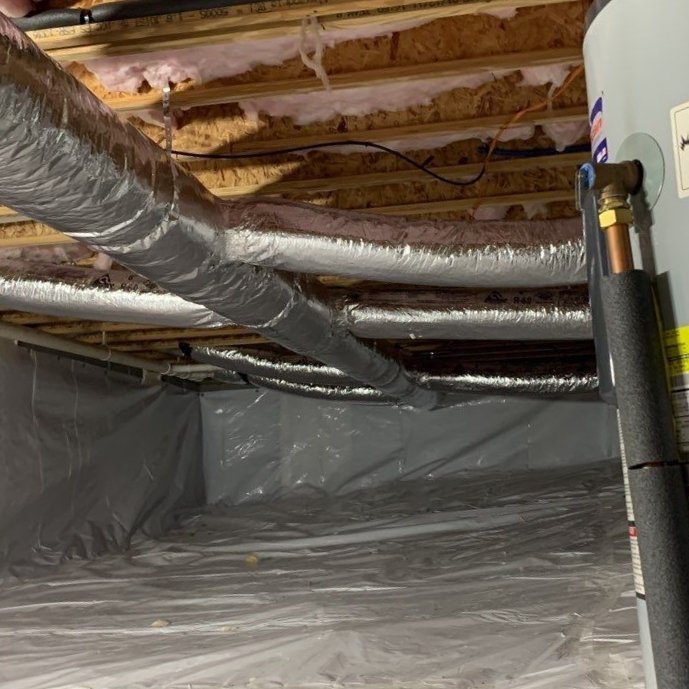Navigating the Cost of AC Replacement
Introduction
As seasons transition and temperatures swing, the indispensability of our air conditioning systems becomes more pronounced. Yet, when your reliable cooling ally starts exhibiting signs of wear and tear or, worse, decides to retire unexpectedly, a crucial question emerges: "What financial commitment does replacing my AC unit entail?"
The prospect of AC replacement can be formidable, with costs varying widely based on factors such as the system type, home size, and specific cooling requirements. In this blog post, we embark on a journey to demystify the intricacies of AC replacement costs. Our aim is to provide you with a comprehensive understanding of the elements influencing the price, empowering you to make well-informed decisions regarding your home's comfort. Whether you're considering a proactive upgrade or grappling with an unforeseen breakdown, let's explore the key considerations shaping AC replacement costs and uncover strategies to harmonize both comfort and budget.
How Much Does an AC Unit Cost to Install?
Cost Range for complete 2 Ton AC System:
Split Heat pump: $6200-18,000 (14-20 SEER rating)
Split straight cool with gas furnace: $6100-19,300 (14-20 SEER rating, 80% AFUE)
Package unit: $7500-8800 (14-16 SEER rating)
In 2022, homeowners on average pay $9300 for a central air conditioner unit installation. The main factors that affect the cost of your AC unit include your home's square footage, brand, and the SEER rating you choose. For a 1,300 to 1,600 sqft home you would want a 2.5-ton AC unit and the average installation cost would be around $8000. Read more about these cost factors below.
AC Installation Costs by Square Footage
One way to calculate the average costs for a new AC unit would be by figuring the exact area of square feet you are wanting to cool for your home. Installing a central air conditioner into a 2000 square ft. home with an existing forced air furnace heating system (that has all ductwork installed properly) would cost between $8,000 and $10,000.
How much does it cost to install an AC Unit for a 2,400 Sq. ft Home?
The average AC unit can cool 600 square feet of your home per 1 ton of air conditioning cooling capacity. This would produce 12,000 British thermal units (BTU) per 600 square feet. You can take the 2400 sq. ft measurement and divide it by 600 sq. ft of cooled area (per 1 ton AC unit cooling capacity) and calculate that you would need a 4 TON air conditioner. This A/C system should be able to remove 48,000 BTUs per hour (4 tons x 12,000 BTUs.) A 4 TON air conditioner would cost around $3,700 for the AC unit alone or a total installation cost of $9,000. Higher efficiency units may cost more.
How Much Does an Air Conditioner Replacement Cost?
After you've identified or confirmed the right size unit needed, there is an estimating process to determine the new ac unit cost to install. We'll go through the steps here:
Air Conditioner Replacement Estimating Steps
Step 1 - HVAC system configuration
To determine the cost of the unit, we must first know the configuration, split system, or package unit. This will also affect labor and material costs. To determine what configuration you have in your home, check out our article here:
There are other configurations to be considered, geothermal, ductless, etc. But for simplicity's sake, we'll just discuss traditional central AC units.
Step 2 - Heating fuel source
The heating fuel source determines what equipment is needed and therefore the price. Some of the options to choose from:
Electric heating element
Heat Pump
Natural Gas
Propane
Oil
Hydronic (uses water heater)
The heating source also affects labor and material costs. Once again, we'll stick to the most common, natural gas furnace and heat pump.
Step 3 - Brand
HVAC manufacturers for the most part use regional distributors. They are typically managed to avoid direct competition. For instance, there is only one American Standard distributor in East Tennessee.
At the distributor level, there could be multiple dealers in the same geographic location. Every HVAC company specializes in a particular brand as an authorized dealer. Typically, an HVAC dealer has one primary major brand with one or two secondary economy brands. Some HVAC companies are authorized dealers of multiple major brands. This has become more common with the current equipment shortages.
Step 4 - Efficiency
The efficiency of the unit is the number one driver of cost. The size or capacity of the system is a big determiner of cost. But it's not an elective. Determining what efficiency is a decision the homeowner makes. There are two efficiencies to consider, heating and cooling.
Heating efficiency for a gas furnace is expressed in Annualized Fuel Utilization Efficiency (AFUE). There are two major categories, 80% and 90% plus. The big differences are in the actual equipment. 90% furnaces have a secondary heat exchanger. Additionally, 80% furnaces will have sheet metal flue piping and 90% furnaces will have PVC flue piping. Converting from 80 to 90 percent or visa versa would incur additional costs to install.
Cooling efficiency for straight cool air conditioners or heat pumps is expressed in Seasonal Energy Efficiency Ratio (SEER). The minimum SEER rating currently available is 14. All manufacturers make 14 and 16 SEER AC units. Every manufacturer has a different line of high-efficiency equipment, 17, 18, 19, 20, and up.
Higher efficiency units typically come with some additional costs such as thermostats. But they are a small percentage of the overall cost.
Step 5 - Miscellaneous Costs
Every company has a standard cost for labor and material for a basic system replacement. This typically includes:
Removal and disposal of the old equipment
Installation and startup
Tape
Sheet metal
Oxygen
Acetylene
Nitrogen
Wire
Wire nuts
Pad
Disconnect
PVC fittings
Copper fittings
Brazing material
Condensate drain pan
Risers
Some ductwork
Gas fittings
When the condition of your home or the existing systems is such that labor or material is outside that list, additional costs will be incurred. As an example duct systems must be sized to fit the capacity of the AC unit. If ductwork is undersized, it will need to be upsized.
Some things could cause additional labor expenses, such as access to the system or a condensate pump. If your unit is in a tight attic or crawlspace, this would add additional time and labor to the unit replacement cost.
Hidden Costs in Your Estimate
There are also air conditioning installation costs that might not be included in the initial AC estimate but you may want to factor in. These are the things you should ask the HVAC contractor about and whether or not the cost is included in the initial estimate they're providing. Here are a few cost-related questions you should have answers to:
Will a permit be required from your local city or county building department?
Will the unit also require an inspection by a representative of the building department to ensure the system is up to code?
If you live in an older home that has asbestos or lead paint, there may be an additional cost to test, remove, or replace the material. Ask about this.
Does it include extended labor warranties?
Evaluating AC Installation Estimates
Here are a few factors to be considered when determining what could affect the cost of a new air conditioner unit installation.
High Priced Bid Factors:
Air conditioner replacements vary in price. The brand, size, and efficiency of the unit are the primary drivers of price. Other factors such as how quiet an air conditioning system is might be pertinent. Homeowners should research the brand of AC system, including customer reviews and performance ratings.
The customer interface can also the total cost to vary depending on hardware. Smart thermostats and smart home compatible thermostats could cost as little as $150 or as much as $500. High-efficiency communicating systems could cost as much as $1,000.
High-end air conditioning contractors might have more equipment and overhead, which may show up in your price estimate.
Air conditioning unit extended warranties will impact your total installation cost. All major brands have standard manufacturer's warranties that protect you from faulty unit equipment. The basic warranty is 5 years parts. The registered warranty is typically 10 years. Most companies offer some amount of labor warranty usually about 1 year. Extended labor warranties can be purchased for up to 10 years. Be cautious of extended "in-house" labor warranties. You want the 3rd party warranty if available.
Low Priced Bid Factors:
Unlicensed, uninsured HVAC contractors will often provide a lower bid. Homeowners could be responsible for laborer injuries or damages that occur. To avoid unnecessary risk, homeowners should always select a licensed contractor for their home improvement projects.
Contractors that avoid local policies or are unaware of applicable local, regional, and federal incentives like energy efficiency rebates can leave homeowners unprotected or may cause them to miss out on other cost savings. Navigating the bureaucracy of air conditioning regulation is something every good contractor must be able to do. A licensed HVAC contractor will assure your energy compliance and maximize your return on investment.
Extremely low bidders are often desperate for a job. Be sure to always vet your air conditioner contractor fully before hiring.
Additional cost factors that might be involved:
Plumbing
Electrical work
Removal of an existing HVAC system
Installing the air conditioner at a new location
Modifying the framing or surfacing of the home for installation
Bringing any current paired systems up to code.
Ductwork
Financing
How much does a central air conditioning unit cost?
This estimated pricing is based on a basic ac unit replacement using standard HVAC equipment and practices. It does not include any miscellaneous costs. Central AC unit prices also vary by geographical location. These are not the national average cost. They are based on 2022 prices in Knoxville, TN.
The prices are broken down into SEER ratings. Gas furnace pricing is 80% AFUE. Each level of cost is appropriately aligned. For instance, 14 and 16 SEER AC systems are single-stage air conditioners with single-stage heating. 17 SEER AC units are two-stage air conditioners with two-stage heating. 18 and 20 SEER systems are variable speed air conditioners with variable stage heating.
These AC unit costs are for a home AC unit. They are not for commercial applications. They are for the entire HVAC system including a standard thermostat. Upgraded thermostats are only used where required.
Split heat pump systems include heat pump condensers, indoor air handlers, heat kits, and programmable thermostats.
Split gas heat and cooling systems include a straight-cool AC condenser, furnace, programmable thermostat, and an indoor evaporator coil.
Packaged units are heat pumps with a heat kit and a programmable thermostat.
These are for a one-for-one AC unit replacement cost. They are not for new construction or cooling system conversion.
Conclusion
In conclusion, understanding the cost of AC replacement is crucial for homeowners looking to maintain a comfortable living environment. While the initial investment may seem significant, it's essential to consider the long-term benefits, including increased energy efficiency and reduced maintenance expenses.
Factors such as the type of AC unit, installation complexities, and regional pricing variations can influence the overall cost. It's advisable to obtain multiple quotes from reputable HVAC professionals to ensure a fair and competitive price.
Additionally, homeowners should weigh the potential savings on energy bills and the positive impact on the environment with a more energy-efficient system. Regular maintenance and timely replacement can contribute to lower long-term costs and extend the lifespan of the HVAC system.
In the end, investing in a quality AC replacement is an investment in home comfort and energy efficiency. By making informed decisions and considering the long-term benefits, homeowners can ensure a more comfortable living space while managing costs effectively.




